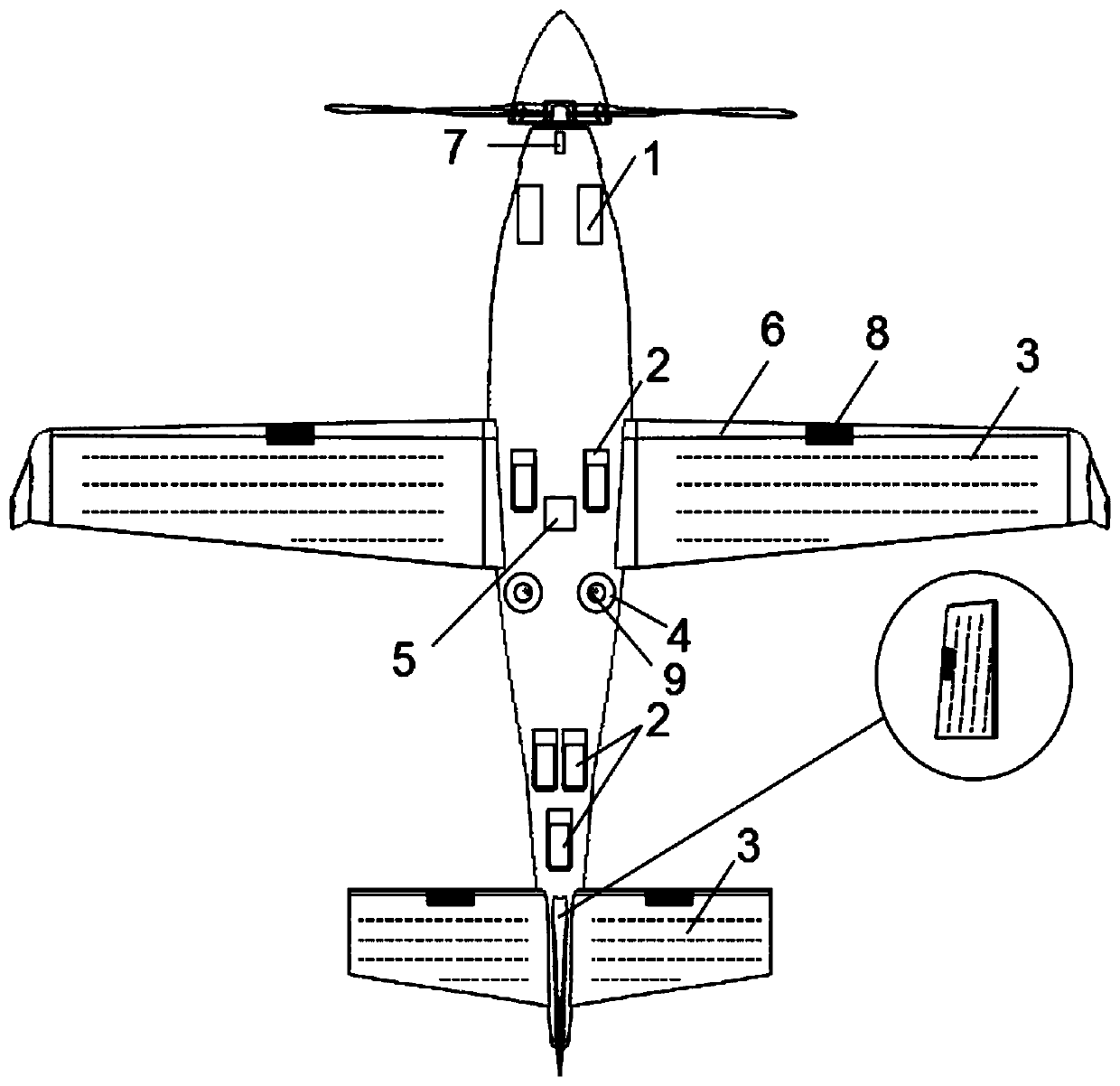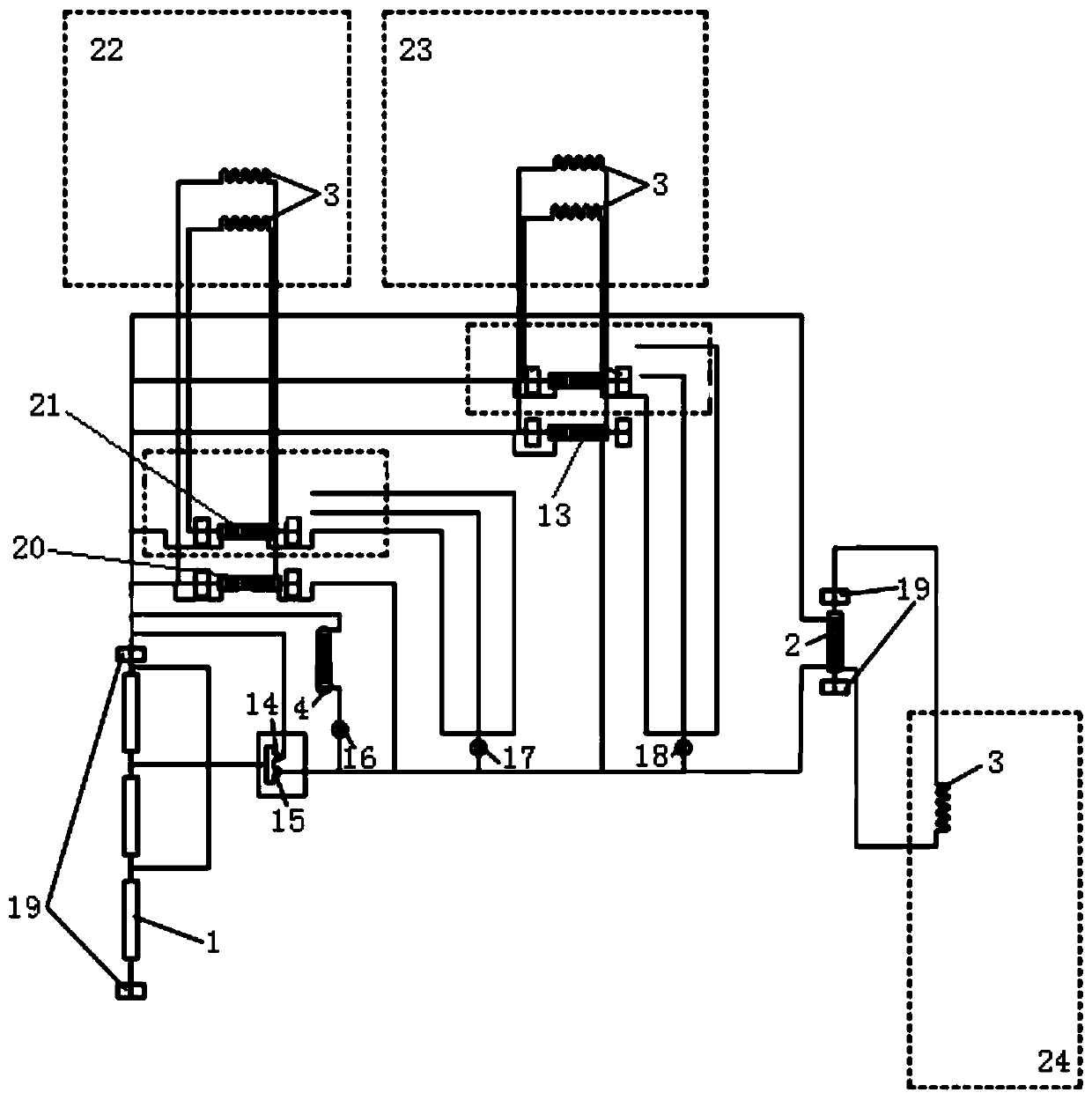Anti-icing and deicing device and method for wings and emages of turbo-prop aircraft
A turboprop and anti-icing technology, applied in de-icing devices, aircraft parts, transportation and packaging, etc., can solve the problems of increasing aircraft accidents, prolonging the time of de-icing, and consuming large amounts of heat, so as to improve system reliability and improve Deicing efficiency and the effect of extending the use time
- Summary
- Abstract
- Description
- Claims
- Application Information
AI Technical Summary
Problems solved by technology
Method used
Image
Examples
Embodiment
[0072] The installation positions of the main components of this embodiment on the aircraft are as follows: figure 1 Shown.
[0073] Aiming at the shortcomings of single-engine turboprop aircraft anti-icing and deicing technology and the shortcomings of loop heat pipes and TKS used in aircraft anti-icing and deicing, a circuit using engine waste heat is proposed based on the improvement of loop heat pipes. The heat pipe assists the efficient, economical and reliable anti-icing and deicing device and method of the TKS system. It mainly performs anti-icing and deicing on the wings and tail of single-engine turboprop aircraft.
[0074] An anti-icing and deicing device for the wing and tail of a turboprop aircraft, comprising:
[0075] System closed loop: including heat transfer evaporator 1 and No. 1 valve 14 that are connected end to end along the flow direction of the working fluid;
[0076] TKS liquid storage tank heating circuit: including heat transfer evaporator 1, steam line, TKS...
Embodiment approach
[0112] Rely on the sensor signal to control the opening and closing of the valve.
[0113] The atmospheric temperature sensor 7 detects the atmospheric temperature and controls the first valve 14 and the second valve 15. The TKS liquid storage tank temperature sensor 9 detects the temperature of the TKS liquid and controls the third valve 16. The icing detector 8 detects whether it is icing, and controls the fourth valve 17, the fifth valve 18 and the pressure pump 5.
[0114] The flow of anti-icing and deicing methods is as follows Figure 8 Shown:
[0115] Step 1: At the beginning, the aircraft starts, and the No. 1 valve 14, the No. 2 valve 15, the No. 3 valve 16, the No. 4 valve 17, and the No. 5 valve 18 are closed.
[0116] Step 2: The atmospheric temperature sensor 7 detects whether the atmospheric temperature is higher than 5°C.
[0117] If it is higher than 5°C, the No. 1 valve 14 is opened and the No. 2 valve 15 is closed, and the aircraft is in the closed state of the anti-...
PUM
 Login to View More
Login to View More Abstract
Description
Claims
Application Information
 Login to View More
Login to View More - R&D
- Intellectual Property
- Life Sciences
- Materials
- Tech Scout
- Unparalleled Data Quality
- Higher Quality Content
- 60% Fewer Hallucinations
Browse by: Latest US Patents, China's latest patents, Technical Efficacy Thesaurus, Application Domain, Technology Topic, Popular Technical Reports.
© 2025 PatSnap. All rights reserved.Legal|Privacy policy|Modern Slavery Act Transparency Statement|Sitemap|About US| Contact US: help@patsnap.com



